Dialectical Failure and the Borderline Pattern: Understanding the Polarized Mind
Defining the Dialectic
Dialectics refers to the tension and eventual reconciliation between opposing forces or ideas. It is the process of holding two seemingly contradictory truths and moving toward a synthesis that integrates both. In its simplest form, it’s the movement from thesis, to antithesis, and finally to synthesis—a dynamic process that allows for growth, balance, and the coexistence of complexity (Linehan, 1993a).
Dialectical Behavior Therapy (DBT), developed by Marsha Linehan, is grounded in this philosophical model. The dialectical worldview recognizes that reality is composed of opposites—change and stability, self-acceptance and the need for improvement, individuality and connection—and that psychological health depends on our ability to balance and integrate these polarities rather than remain trapped within them (Linehan, 1993a, 1993b).
Borderline Personality Disorder as a Dialectical Breakdown
Linehan (1993a) describes Borderline Personality Disorder (BPD) as a “dialectical failure.” Borderline individuals often vacillate between rigidly held yet contradictory points of view. They may feel immense love and admiration for someone one day, and profound hatred and distrust the next. This back-and-forth swing—between idealization and devaluation, hope and despair, self-worth and self-loathing—illustrates a breakdown in dialectical synthesis.
Instead of moving fluidly between opposites, the individual becomes stuck. Thought, emotion, and behavior are organized around rigid, either/or categories:
“You’re either good or bad.”
“I’m either loved or abandoned.”
“Life is either unbearable or perfect.”
“If I fail, I’m worthless.”
These polarized judgments leave little room for nuance, transition, or change. As a result, individuals often feel trapped in a world where everything is absolute—where a single mistake erases one’s worth, and a single disappointment destroys all trust (Linehan, 1993b).
Splitting and Emotional Polarization
Psychoanalytic theorists have long referred to this pattern as splitting—a defense mechanism in which people or situations are viewed as entirely good or entirely bad, with no middle ground (Kernberg, 1975). This cognitive-emotional process often arises from intense affective states. When strong positive or negative emotions are activated, perception narrows, and the mind defaults to extremes as a means of simplifying internal chaos (Kernberg, 1984).
For example, imagine a partner forgets to call after promising to check in. The borderline individual might experience this as a total betrayal:
“You never loved me. I can’t trust you. You’re just like everyone else.”
Yet later, when the partner apologizes sincerely, the emotional pendulum may swing in the opposite direction:
“You’re perfect. You really do care about me. I overreacted.”
Neither of these evaluations is fully accurate, but both feel absolutely true in the moment. The inability to hold both realities simultaneously—that the partner is caring and fallible, loving and imperfect—is the essence of dialectical failure.
The Emotional Roots of Polarization
This rigid cognitive style is not unique to those with BPD; it is a feature of human cognition under stress. However, for borderline individuals, emotional intensity amplifies this process. Their emotional experiences are so powerful that they dominate cognition, leading to unstable self-image, tumultuous relationships, and chronic feelings of emptiness or contradiction (Linehan, 1993a).
When emotions swing to such extremes, the mind struggles to integrate them, resulting in chronic instability. The person feels internally split, torn between irreconcilable parts of themselves—wanting closeness yet fearing it, seeking life yet longing for escape (Kernberg, 1975).
Dialectical Resolution and the Path Forward
True healing begins when the individual learns to hold both sides of their experience without collapse into one pole. In DBT, this process involves cultivating an “AND” mindset instead of an “EITHER/OR” one:
“I want to live and I want to die.”
“I love this person and they hurt me.”
“I feel abandoned and I know people care about me.”
In the case of suicidality, for example, Linehan (1993a) observed that suicidal behaviors often decrease when the individual begins to accept the coexistence of contradictory desires—wanting to die and wanting to live. This synthesis creates psychological flexibility, allowing for movement, growth, and ultimately, hope.
Beyond Borderline: The Universality of Splitting
It is important to remember that this dialectical struggle is not unique to those with a borderline diagnosis. Many people, regardless of diagnosis, fall into polarized thinking when under pressure. Culturally, we live in a world that often rewards certainty and punishes complexity—where moral, political, and personal issues are cast in black and white. In this sense, rigid cognition is not only pathological; it is cultural (Beck et al., 2004).
To some degree, we all engage in splitting when we label others or ourselves in absolute terms. We all struggle to tolerate ambiguity. Recognizing this tendency is part of psychological maturity—the capacity to see that people are mixtures of good and bad, that change is constant, and that truth often lies between extremes.
The Ongoing Dialectic of Growth
Dialectical synthesis is not a single moment of enlightenment but a lifelong process. Each time we integrate opposing perspectives, we create a new, more balanced view of reality—a new synthesis that eventually becomes the starting point for a new thesis and antithesis (Linehan, 1993a).
In this way, healing unfolds as a spiral, not a line. The process repeats, each turn bringing us closer to wholeness. Every reconciliation of opposites leads to new growth, deeper balance, and greater psychological flexibility.
As Linehan (1993a) wrote, “The dialectical position is that the truth often lies between extremes, and that change is constant and inevitable.”
When we embrace that truth—both personally and collectively—we begin to move from fragmentation toward integration, from rigidity toward balance, from polarization toward peace.
—Joseph Mounts M.Ed., AADC, LPC
References
Beck, A. T., Freeman, A., Davis, D. D., & Associates. (2004). Cognitive therapy of personality disorders (2nd ed.). Guilford Press.
Kernberg, O. F. (1975). Borderline conditions and pathological narcissism. Jason Aronson.
Kernberg, O. F. (1984). Severe personality disorders: Psychotherapeutic strategies. Yale University Press.
Linehan, M. M. (1993a). Cognitive-behavioral treatment of borderline personality disorder. Guilford Press.
Linehan, M. M. (1993b). Skills training manual for treating borderline personality disorder. Guilford Press.

